The Moon is one of the most interesting objects in the sky. People have looked at it for thousands of years, thinking about what it is and how big it can be. Although the moon seems smaller than the Earth or Sun, it is actually quite large, about 1/4 Earth size. In fact, its diameter is about 2,159 miles (3,474 km), which is about the width of the United States from coast to coast.
The Moon is about 3,474 kilometers (2,159 miles) wide, making it about one-quarter of the Earth’s size. If you can travel around its equator, you cover more than 10,000 kilometers (more than 6,000 miles). Its surface area is about 38 million square kilometers, about 7% of the Earth’s surface, which is still enough to keep several continents. It is slightly smaller than Asia.
Even though it is much smaller and lighter than the Earth, only about 1.2% of the mass of the Earth, it plays a big role in our lives. Its gravity helps control the tide of the ocean, and it keeps the Earth’s inclination stable, which affects our weather and climate. So, when it may look distant and small, the moon is a giant in itself, and the Earth will not be the same without it.
Also Read : How Strong Is Gravity on the Moon?
How Big is the Moon?
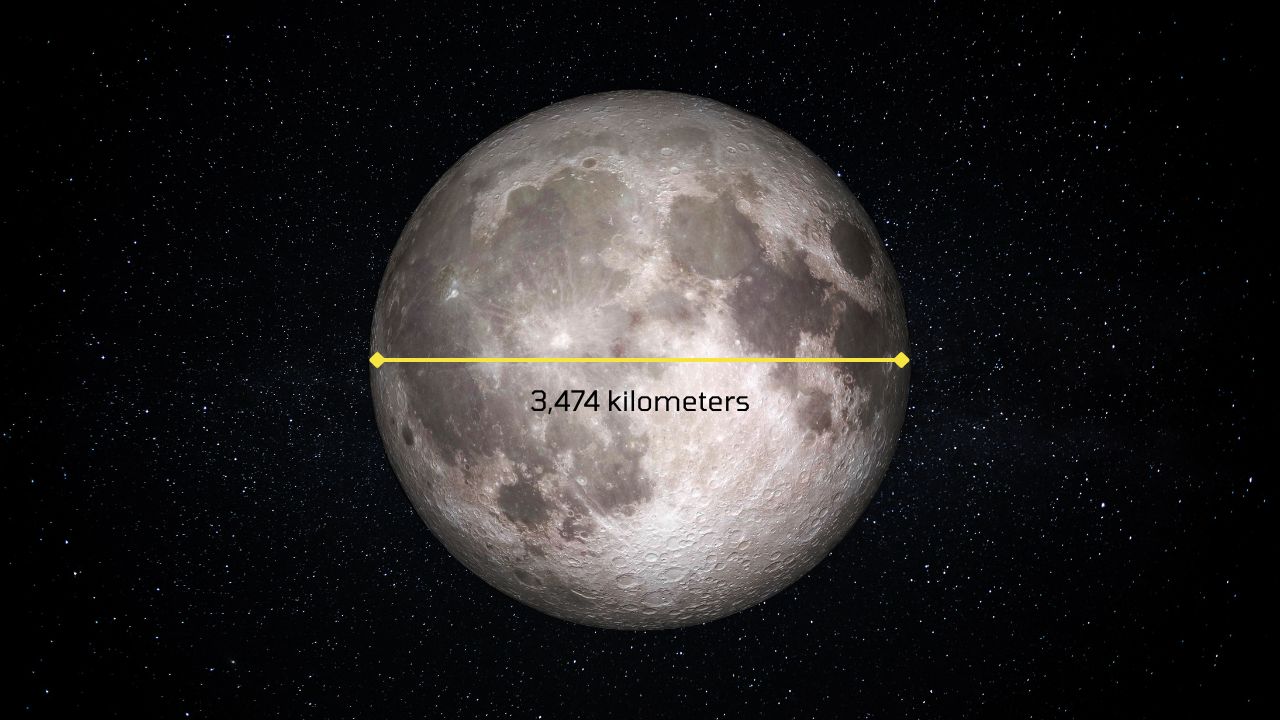
The Moon is about one-quarter the size of Earth, with a diameter of 3,474 kilometers (2,159 miles), which is roughly as wide as Australia. Its surface is about 7% than Earth’s, and because it has much less gravity, just one-sixth of what we feel on Earth, you’d feel much lighter if you stood there. On average, the Moon orbits about 384,400 kilometers (238,855 miles) away from us, but despite the distance and its smaller size, it plays a huge role in our lives. It helps control the ocean tides and even keeps Earth’s tilt steady, which affects our seasons and climate.
Also Read: What are Goldilocks Planets?
How Does the Moon’s Size Compared to Earth?
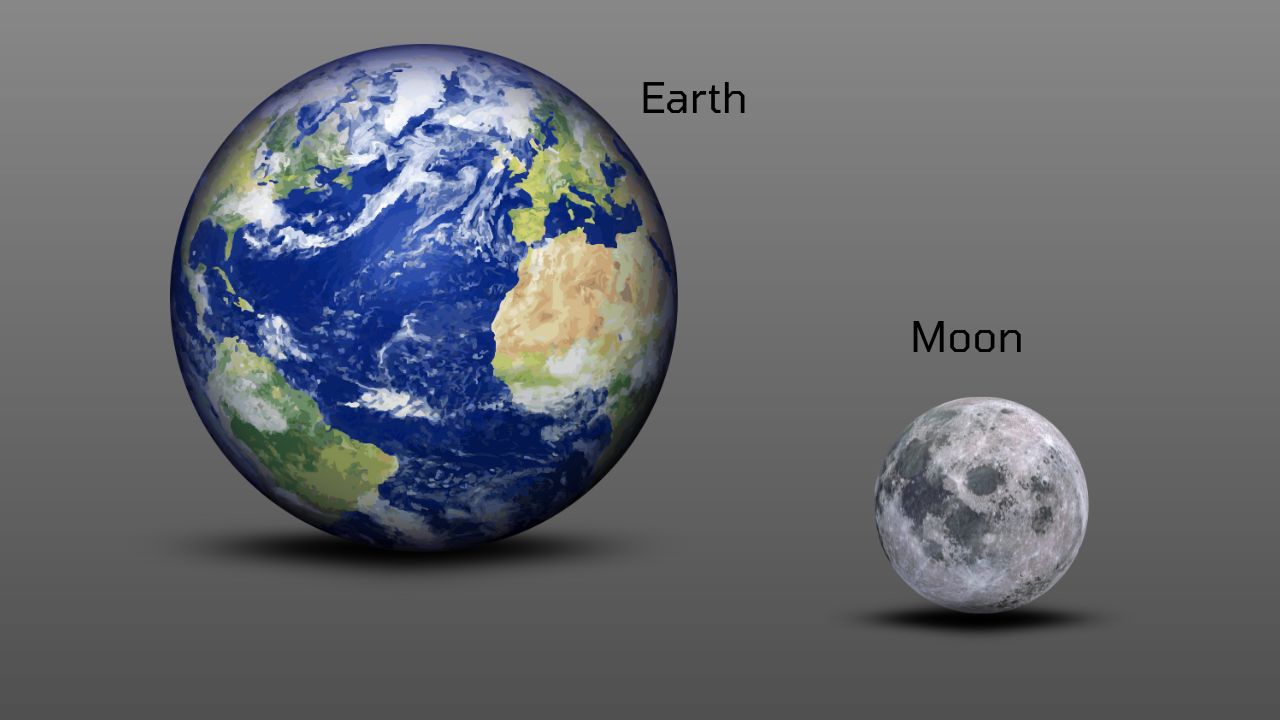
The Moon might seem small compared to Earth, but it’s actually one of the biggest moons in our whole solar system.
🔬 Subscribe to SciMail
Get the latest science discoveries straight to your inbox!
- It measures about 3,474 kilometers (2,159 miles) across roughly a quarter the width of Earth.
- To give you an idea, Earth is about four times wider, at 12,742 kilometers (7,918 miles).
- In terms of volume, you’d need around 50 Moons to fill up the space inside Earth.
- The Moon’s surface area is about 38 million square kilometers, which adds up to around 7% of Earth’s surface just a bit smaller than Asia.
- It’s much lighter, too, with only 1.2% of Earth’s mass, which is why gravity on the Moon is so weak, only one-sixth of what we feel here.
- But don’t let its size fool you. The Moon still pulls our ocean tides, keeps Earth’s tilt stable, and helps shape our seasons and climate.
- It’s close enough to be a familiar face in the night sky and without it, life on Earth would be very different.
- Among the rocky planets, Earth is lucky to have such a large and powerful companion in the Moon.
What Are the Moon’s Volume and Surface Area?
The Moon’s volume is about 21.9 billion cubic kilometers, making it nearly 50 times smaller than Earth in volume. Even though it’s much smaller, that’s still a massive amount of space.
When it comes to surface area, the Moon has about 38 million square kilometers, that’s around 7% of Earth’s surface. It’s actually a bit bigger than Africa, which gives more opportunities for future explorers
How Do Scientists Measure the Moon’s Size?
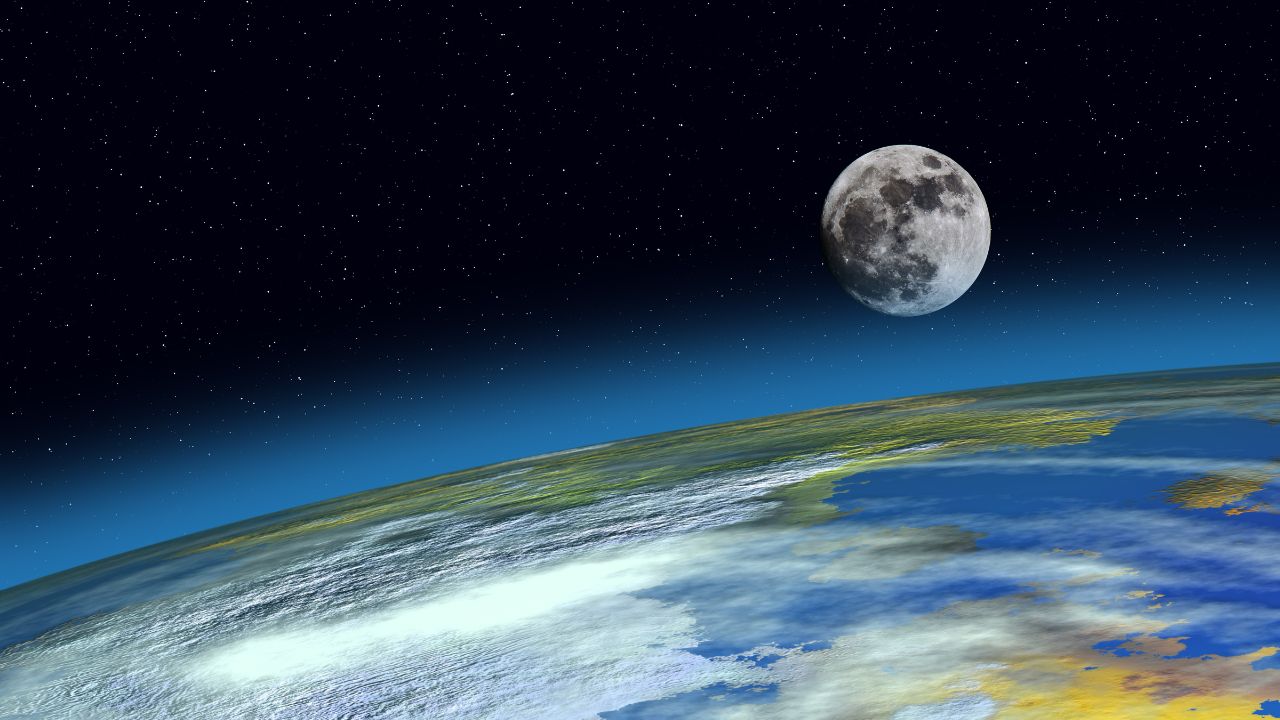
- Angular diameter calculations – Measuring how large the Moon appears from Earth and using geometry to calculate its actual size.
- Laser ranging – Bouncing laser beams off reflectors placed on the Moon during Apollo missions to measure the exact distance.
- Satellite imaging – Using high-resolution images from spacecraft to observe and measure the Moon’s surface directly.
- Radar reflection – Sending radio waves to the Moon and analyzing the returning signals to determine distance and size.
By combining these techniques, scientists can measure both the Moon’s distance from the Earth and how big it looks in the sky. With this data, they use mathematics and geometry to calculate their actual diameter, which has been confirmed by an average of 3,474 kilometers (2,159 miles).
Why Does the Moon Appear Bigger or Smaller from Earth?
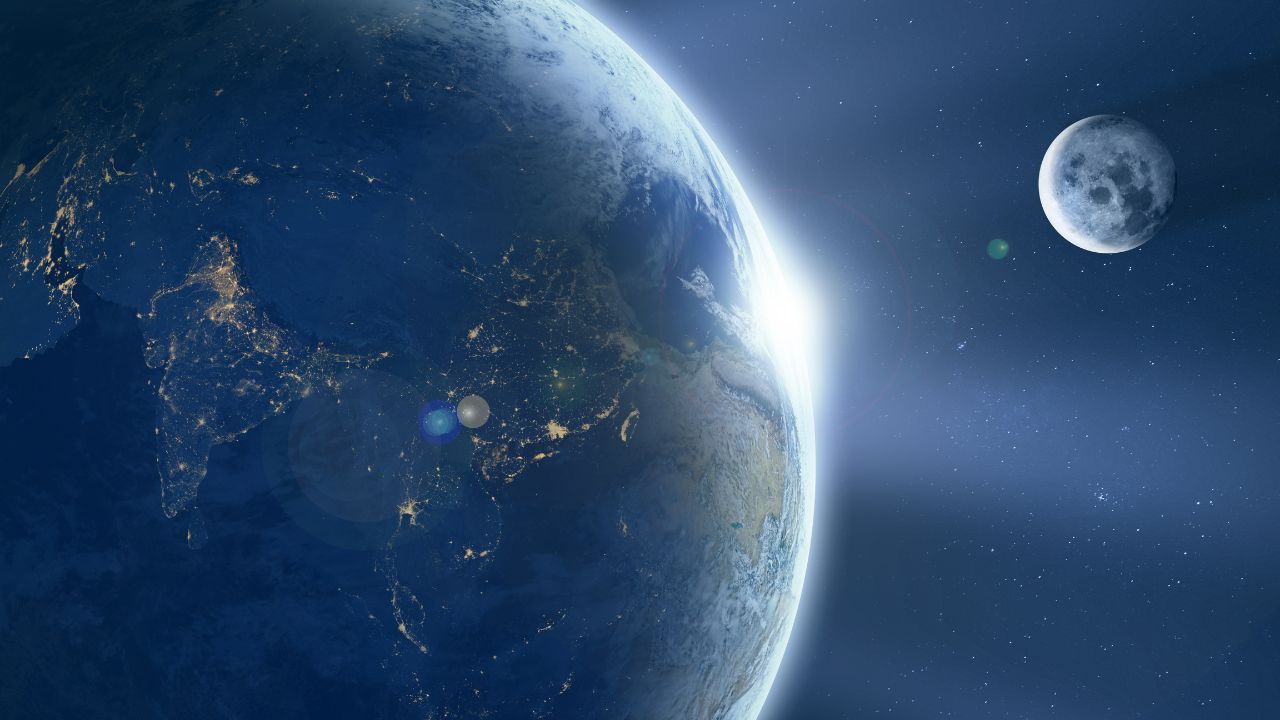
The Moon can look very large when you gaze up at it, while at other times, its size appears significantly smaller. This is largely because of the position the Moon lies on its elliptical orbit around Earth. Its shape is not circular which means the distance varies. When the Moon is closer (perigee), supermoons occur. During apogee, when it looks smaller, it’s further out. Your sight can also mislead you, due to the relative position of the Moon in respect to structures such as trees, buildings, or even large mountains. It forms an optical illusion causing it to look larger than it actually is. Regardless of its shape or position, the relative size will always change depending on its distance to Earth.
How Big Is the Moon Compared to Other Moons in the Solar System?
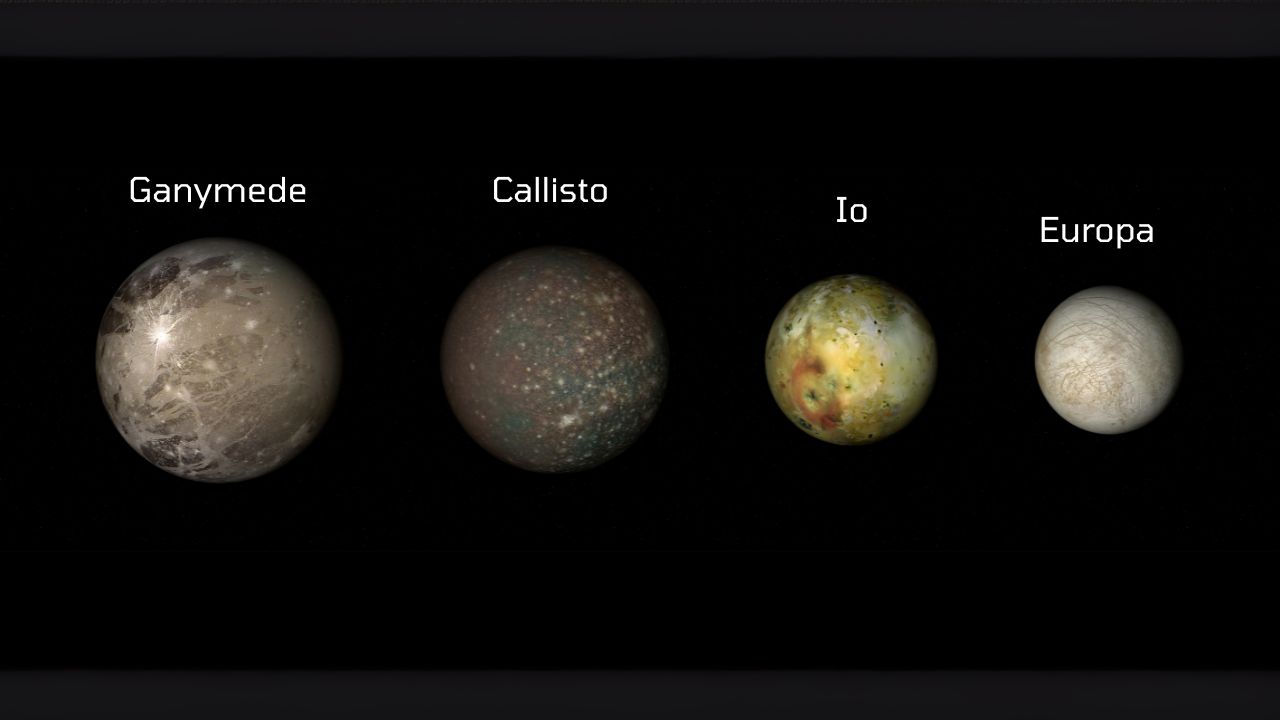
| Moon | Planet | Diameter (km) | Mass(×10²² kg) | Mass Relative to Earth’s Moon | Size Relative to Earth’s Moon |
| Ganymede | Jupiter | 5,268 | 14.82 | 2.02x | 1.52x |
| Titan | Saturn | 5,151 | 13.45 | 1.83x | 1.48x |
| Callisto | Jupiter | 4,821 | 10.76 | 1.47x | 1.39x |
| Io | Jupiter | 3,643 | 8.93 | 1.22x | 1.05x |
| Moon (Luna) | Earth | 3,474 | 7.35 | 1.00x | 1.00x |
| Europa | Jupiter | 3,121 | 4.80 | 0.65x | 0.90x |
| Triton | Neptune | 2,710 | 2.14 | 0.29x | 0.78x |
| Titania | Uranus | 1,578 | 0.35 | 0.05x | 0.45x |
| Rhea | Saturn | 1,527 | 0.23 | 0.03x | 0.44x |
| Oberon | Uranus | 1,523 | 0.30 | 0.30x | 0.44x |


Leave a Reply